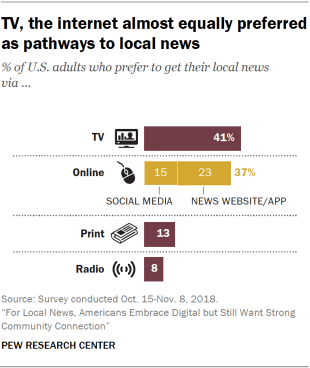The 10-Second Trick For News Report
The 10-Second Trick For News Report
Blog Article
News Report Things To Know Before You Buy
Table of ContentsUnknown Facts About News Report8 Simple Techniques For News ReportNot known Facts About News Report
Confusion over its future instructions is most likely to linger following the effort to take control of the business by Elon Musk6 and the succeeding loss of senior execs (News Report). Meta-owned Instagram is currently more extensively made use of for news, while Tik, Tok has overtaken Snapchat from a reduced base. Outside Western nations specifically in Latin America and Africa we discover a much greater proportion of our example utilizing social networks for news, but we also find different networks in play.
of 18-24s make use of Tik, Tok for any function of 18-24s use Tik, Tok for information In comparison to conventional networks such as Facebook or Twitter, the content of the major Tik, Tok feed is driven less by who you follow and even more by a formula that thinks about what you like and what others are viewing.
Facebook tells us that concerning 4% of the content of the average individual's feed comes from news outlets, though for some that proportion will be a lot higher.7 Twitter does not offer comparable data, yet our survey shows that throughout markets it has a high percentage (56%) that utilize it for news weekly.
An Unbiased View of News Report
Do people believe they are seeing too much or as well little news in these networks? 8 More than a fifth of UK respondents (21%) feel that they see too much information on Facebook and just 3% would love to see more. Facebook has been attempting to reduce the amount of information on the system partially for reputational factors however also because, as previous research shows, individuals are mostly there to connect with close friends and household instead of consume information.
There is a clear link with information evasion: those that commonly avoid the information are two times as most likely to state they see also much news on both Facebook and Twitter when contrasted with the average individual. These information link suggest the ambivalent partnership lots of people have with news on social media sites.
This problem might be among the aspects behind Facebook's current decision to produce a separate tab in five nations (Facebook Information) with content from an option of partner publishers, in parallel with a recurring string of decisions over the last few years to minimize the amount of news generally 'Feed' (recently renamed from 'Information Feed').

Some Of News Report
This is not to claim that social media sites make use of creates misinformation, but that use might generate recognition of and possible exposure to incorrect details, consisting of providing voice to extreme perspectives that previously would not have been extensively heard. When checking out the sorts of false information that people declare to see, we discover that uncertain health and wellness cases around COVID-19, including from anti-vaccination groups, are, as in 2021, still most extensive throughout the majority of regions, in advance of politics.

We do find substantial market-level distinctions in preferences around reading or watching, partly conditioned by usage patterns offline. We find markets with historical patterns of high paper intake such as Finland and Japan near the first in regards to reviewing choice, with low-newspaper-circulation countries like Thailand and Brazil near all-time low.
Around a third (35%) state they are placed off by pre-roll advertisements that occasionally appear ahead of videos. Practically a fifth (17%) state videos don't add to anything that would certainly or else be in a text tale, 13% have problem with technical issues when attempting to watch video clips, and 8% stress over cost or information costs much higher in African countries such as Kenya (35%) and Nigeria (35%).
Report this page